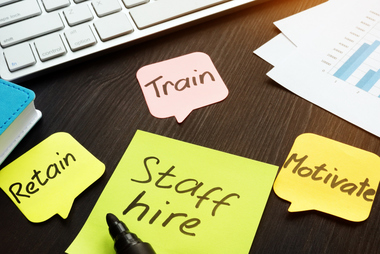Recruitment and Retention Strategies for the Post-COVID Workforce

Talent professionals say that employee experience will be very important in shaping the future of recruiting and retention. As you're building the future of your hiring process, ask yourself:
- Do you need to revisit any recent job offers?
- Do you need to delay any start dates?
- What are you doing to maintain a talent pipeline even though you may not be hiring?
- Which parts of onboarding can be digitized to support virtual experiences? How might candidate experience be improved through AI screening, chat bots or gamification? Are there circumstances in which in-person interaction is not necessary?
- Do you have plans for new hires to have the necessary technology and tools, especially if they won't be in the physical office to start?
- In what areas do you want to elevate your recruitment in the market?
- Recruiting a more diverse workforce will be an opportunity.
- Pivot your firm to connect with what people are going through today.
- Recognize the importance of taking a more empathetic, human tone with messaging.
- Tell authentic stories that reveal your firm's values and purpose.
- Should you develop relationships with new sources of candidates, such as gig platforms?
- If you're in an industry that has been rapidly hiring during the crisis, how do you plan to deal with potential shortages in talent supply?
- How can you improve your virtual interviewing process?
- How can you differentiate your company during the interview process?
- Communicate your culture through stories that connect your mission and vision with candidate values.
- Showcase your culture visually.
- Virtual tours.
- Videos.
- Employee testimonials.
- What human needs can you focus on during the hiring process?
- Empathy.
- Communication.
- Maintaining a sense of community among team members who aren't in the same place.
- Recognizing team leaders by giving them stretch assignments as part of recovery planning.
- How can you differentiate your company during the interview process?
- How can you listen to the needs of employees and encourage them to maintain some form of normality?
- Navigate ways to promote work-life balance that are helpful and meaningful.
- Use flex schedules.
- Encourage employees to block time on their calendars to decompress.
- Help them keep up their morale.
- Navigate ways to promote work-life balance that are helpful and meaningful.
Meanwhile, ask yourself what you can do to reactivate performance management.
- Are you adjusting metrics for evaluations?
- Are you handling changes in performance expectations among employees?
- Are you making talent feel engaged and integrated?
- Are you focusing on internal mobility? Make it a top priority, and you'll be set up for long-term success.
- Data shows that after three years, someone who was promoted has a 70% chance of still being at the company, while someone who moved laterally has a 62% chance.
- An employee who stays in the same position has just a 45% chance of staying at the firm.
- Give workers a sense of job security by openly communicating during workforce reductions.
- Are you staying connected with your people who have been laid off? What is your strategy for reengaging them?
- Are you actively engaging your people in appropriate career development conversations?
- Are you offering benefits and technologies that help remote workers?
- Use virtual collaboration tools.
- Offer on-site child care.
- Underwrite child care expenses.
- Have you adequately considered alternative options to layoffs?
- Have you considered reduced work weeks?
- What new learning content might you need to curate or develop?
- What learning can you take from workforce reduction processes?
The structure and execution of talent processes will need to be rethought and built around the realities of a likely protracted and uneven recovery to continue to achieve desired business outcomes as well as inclusive employee experiences.
Balancing financial necessities with employee satisfaction may not be easy. Create an environment in which employees not only feel comfortable but also work productively. Your actions today will have lasting impacts on your employees well beyond the pandemic.
